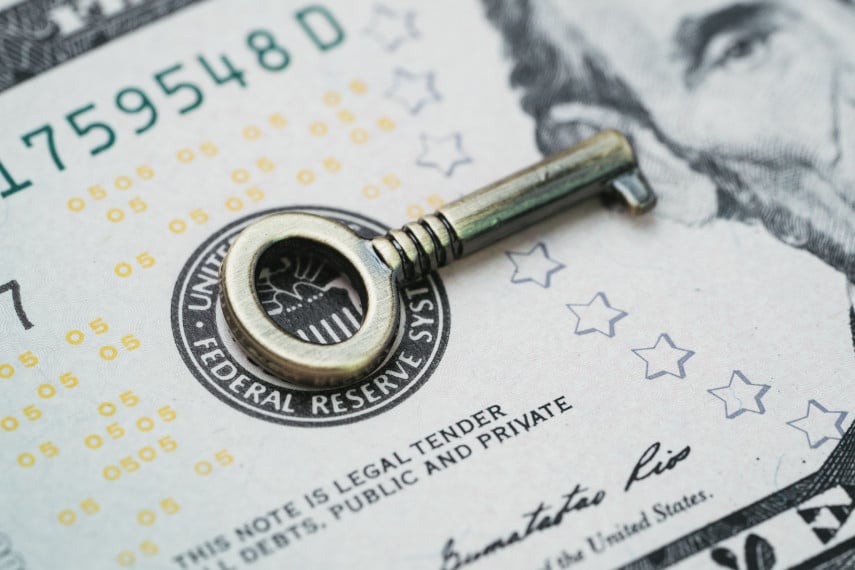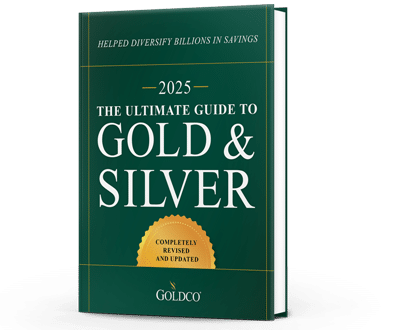Will the Fed Continue Cutting Interest Rates?
With the recent unease in financial markets, one question that has been on many people’s minds is: what will the Federal Reserve do with interest rates The Fed has paused its interest rate cuts...
Federal Reserve

You’ve probably heard about the Federal Reserve System, but do you know what it does, and how what it does impacts your finances and investments? If you’re like most Americans, you may have a general understanding of what the Fed does, and you may have read a little about it, but you don’t really understand the Fed’s day-to-day operations, why it does what it does, and why it was created.
There’s a reason that people who understand the Fed’s workings often choose to buy gold and silver, and it isn’t because they like shiny things. They understand that the Fed has systematically undermined the strength of the US dollar, and that the dollar will collapse at some point due to the Fed’s monetary mismanagement.
When exactly that will occur is unclear, but it’s more a matter of when than if. And to prepare for that, people who understand the Federal Reserve very often choose to invest in gold and silver.
This is the first in a multi-part series about the Federal Reserve. By the end of the series, you should have a better understanding of what the Federal Reserve is, what it does, and how its actions impact your financial well-being.
Perhaps the most misunderstood characteristic of the Federal Reserve System is whether or not it is part of the federal government. And the answer is yes… and no. The Federal Reserve System is a hybrid creation, part government and part private.
The Federal Reserve’s Board of Governors is a federal agency, with the Governors and Chairman appointed by the President with the advice and consent of the Senate. Like some other federal agencies, the Board of Governors has its own pay scale and its own police force with federal law enforcement powers.
The Board of Governors doesn’t receive appropriations from Congress, instead funding itself from a combination of fees it charges for services such as check clearing and currency shipments, and interest payments on the securities it holds on its balance sheet. And the Board of Governors isn’t a small agency either, as it has about 1,850 employees.
The rest of the system is composed of 12 regional Federal Reserve Banks. These banks were chartered by Congress, but they are private institutions. Certain portions of their operations are mandated by Congress, such as the makeup of their boards. But in many respects the banks are quite free to do what they want. That pertains particularly to salaries, which are much higher at the Federal Reserve Banks than they are at the Board. These regional Federal Reserve Banks are also not subject to Freedom of Information Act (FOIA) regulations that government agencies are subject to, allowing much of their operation to take place outside the public’s eye.
The Fed also runs the Federal Open Market Committee (FOMC), the principal agent of monetary policy in the United States. The FOMC normally meets about seven times a year to discuss monetary policy and to set the Federal Reserve System’s official monetary policy.
Membership of the FOMC consists of the seven members of the Fed’s Board of Governors, the President of the New York Fed, and 4 of the 11 other regional Federal Reserve Bank Presidents on a rotating basis, with each President normally serving at least once every three years.
The FOMC will determine the Fed’s monetary policy goals and then set the policies the Fed will engage in to achieve those goals. This means the FOMC will do things like set the target federal funds rate, authorize quantitative easing (QE) policies, make adjustments to open market operations, etc.
The primary regional Federal Reserve Bank is the Federal Reserve Bank of New York (New York Fed), which engages in open market operations at the FOMC’s behest. This makes sense, as New York is the financial capital of the country and most financial transactions the Fed engages in will take place in New York.
This is just a cursory explanation of what the Fed does, and we’ll get into further detail later as to how these operations affect the economy. But why was the Federal Reserve System created in the first place?
The ostensible reason for the Fed’s creation was to bring an end to financial and monetary panics. Throughout the 19th century, the United States was beset by panic after panic. That culminated in the Panic of 1907, after which politicians in Washington decided that they needed to try to put an end to it. Thus was born the Federal Reserve System, whose purpose was to “provide for the establishment of Federal reserve banks, to furnish an elastic currency, to afford means of rediscounting commercial paper, to establish a more effective supervision of banking in the United States, and for other purposes.”
The part about furnishing an elastic currency is the key to understanding the Fed’s creation. At the time, many people in New York and Washington thought that panics were brought about by a shortage of money, so there was pressure to create a central bank that could create more money when demand increased, and decrease the amount of money in circulation when demand fell.
Economics was still very much in its infancy back then, with the Marginal Revolution having taken place not much more than 30 years prior. The effects of money on the economy were still not very well understood by many economists, so the errors that were made in the Fed’s creation are in some way understandable. But in order to understand why they were made, you have to understand a little bit about the history of money and banking in the United States up to that time.
At the time of the American Revolution, there was no money being created by the central government. And during the war, the much-hated Continental dollar was a paper currency that quickly became worthless.
Wanting to put the new nation on a sound financial footing, the Founders strictly limited what Congress could do in the monetary arena, and provided that the States could only allow gold and silver to be legal tender.
It wasn’t until 1792 that the US Mint was formed, to mint gold and silver coins. The dollar was officially established at this point as the currency of the United States, and was defined as 371.25 grains of pure silver, slightly less than the amount of silver present in the Spanish dollars that were the dominant form of currency at the time. The Mint also produced gold coins, with the ratio of gold to silver varying slightly over the years with successive Coinage Acts.
Banking at this time was far different than we understand it now, with numerous state-chartered banks operating throughout the country. Getting your hands on gold or silver coins was difficult in many remote areas of the country, and so circulating currency in many areas consisted of paper banknotes issued by these banks.
This is where the problems with fractional reserve banking began to rear their heads. Many of these banks issued far more paper money than they had gold or silver backing it. So when a crisis inevitably occurred, and people made a run on the bank to get their hands on gold or silver coins, there wasn’t enough to go around, and the bank went under.
No matter how many times this occurred, the lesson was never learned. Fractional reserve banking is like trying to have your cake and eat it too. And once banks overextend themselves, it’s only a matter of when, not if, they’ll be caught out and become subject to a bank run.
The problems with state banks became so numerous that the United States government decided to create a national bank system with the National Banking Acts of 1863 and 1864. Banknotes issued by state-chartered banks were taxed out of existence, so that only national banks could issue banknotes. The Acts also created the first national paper currency, with banknotes also being issued by the US Treasury. The origins of the current system of money and banking in the United States date back to these original acts.
Throughout the remainder of the 19th century, panics and financial crises continued to plague the economy, however, and occurred with regularity. Finally, the Panic of 1907 occurred, and Wall Street had had enough. The calls for a central bank grew stronger and, after the National Monetary Commission finished its work, it remained up to Congress to enact the legislation that created the Federal Reserve System.
In the next installment of this series, we’ll go into greater detail about the Fed, the forces behind its creation, and the impacts the Fed has had on the economy over the past 100-plus years.

